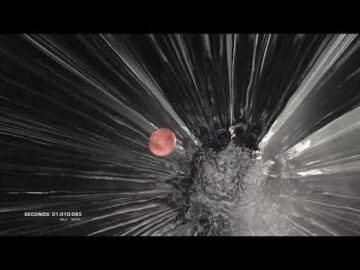Researchers led by Professor Dennis Leung from the Department of Mechanical Engineering at the University of Hong Kong (HKU) has discovered a new possibility—a rechargeable aqueous battery with a magnesium metal anode. The innovation opens a new direction for the development of post-lithium-ion batteries.
“With a high theoretical capacity and negative electrochemical potential, magnesium is an attractive anode material,” said Professor Leung. “Magnesium is also non-toxic and earth-abundant.”




Magnesium (Mg) makes up over 2% of the Earth’s crust and is 1,000 times more abundant than lithium. Mg metals were long considered difficult to use in batteries because of their high reactivity. Mg is passivated when exposed to moisture, forming an impermeable oxidation film that blocks redox reactions. Most researchers study Mg batteries with non-aqueous organic electrolytes, but they are often costly, unstable, and poorly conductive.
Rechargeable Magnesium (Mg) batteries are a promising post-Li-ion battery technology, but their development has been critically hampered by the passivating nature of Mg, particularly in aqueous solutions. Due to a quick dismissal of its reversibility, the use of Mg anodes in aqueous electrolytes has been overlooked, and most researchers focus on nonaqueous systems instead. In this work, reversible, aqueous Mg battery chemistry has been realized for the first time, via the conversion of its impermeable passivation film to a conductive metallic oxide complex, facilitated by Cl– regulation and the suppression of the hydrogen evolution reaction using a MgCl2 water-in-salt (WIS) electrolyte. When coupled with copper hexacyanoferrate as the cathode, the full battery exhibits an impressive voltage plateau of 2.4–2.0 V and a stability of over 700 cycles with a Coulombic efficiency of up to 99% at 0.5 A g–1. Mg dissolution and deposition have proven reversible in the aqueous MgCl2 WIS electrolyte.

Brian Wang is a Futurist Thought Leader and a popular Science blogger with 1 million readers per month. His blog Nextbigfuture.com is ranked #1 Science News Blog. It covers many disruptive technology and trends including Space, Robotics, Artificial Intelligence, Medicine, Anti-aging Biotechnology, and Nanotechnology.
Known for identifying cutting edge technologies, he is currently a Co-Founder of a startup and fundraiser for high potential early-stage companies. He is the Head of Research for Allocations for deep technology investments and an Angel Investor at Space Angels.
A frequent speaker at corporations, he has been a TEDx speaker, a Singularity University speaker and guest at numerous interviews for radio and podcasts. He is open to public speaking and advising engagements.









